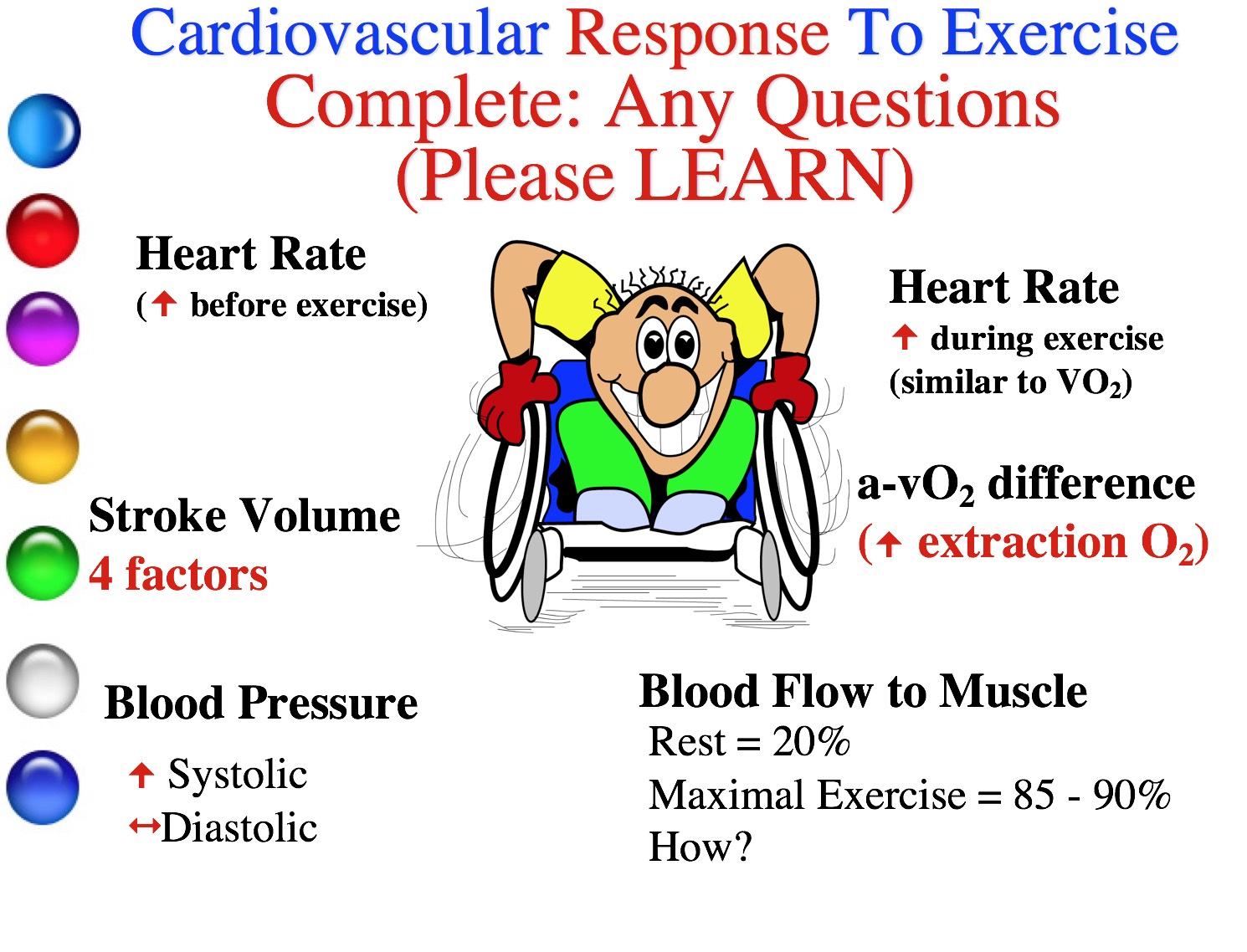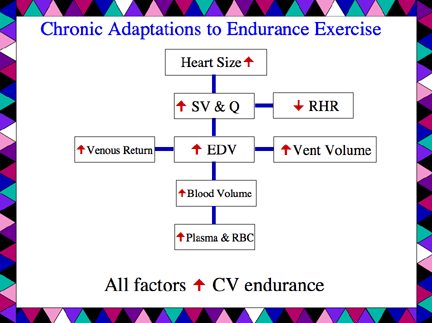 |
| Class: Click HERE for a YOUTUBE video that Explains these Responses |
| Interestingly, heart rate begins to increase before exercise due to sympathetic nervous system anticipation of exercise |
| Heart rate during exercise increases similar to VO2 (However, VO2 is more closely related to the actual workout intensity. This is because heart rate fluctuates to hydration levels, stress levels, food intake and other factors.) |
|
| Four Factors that increase Stroke Volume: CLASS, BE ABLE TO EXPLAIN THESE FOUR FACTORS! |
| 1) Increased venous blood return (EDV)—this enhanced blood return to the heart from the contracting muscles surrounding the veins increases EDV (therefore the heart can pump more blood--thus increasing stroke volume) |
| 2) Ventricular stretch (capacity to enlarge)—This increased stretch leads to a more poweful ventricular contraction (also referred to as Preload or Frank-Starling mechanism). The heart is a muscle and a muscle stretched can produce a bigger contraction--thus increasing stroke volume. |
| 3) Ventricular contractility—with exercise the heart muscle gets a signal message from the brain to contract harder--thus increasing stroke volume. |
| 4) Aortic and pulmonary artery blood pressure—healthy arteries have better vasodilation. With exercise the arteries dialate (get larger) allowing more blood to travel much more efficiently through the systemic and pulmonary circuits. This increases stroke volume too. |
| Systolic blood pressure increases with exercise intensity. Diastolic pressure should stay pretty stable in healthy individuals (sometimes it actually drops due to the vasodilation of arteries explained above.) |
| a-vO2 difference shows enhanced extraction of oxygen at capilaries in muscle cells; this extraction of oxygen is needed to provide oxygen at the ETC. |
| Blood flow to muscle is dramatically enhanced. Our body redirects blood flow with these precapillary spincter (round) muscles. This inhibits blood where it isn't needed and enhances blood to muscles that need the oxygen at the ETC. |
|
|
 |
Important Note:The Graph Below is NOT included in Exam 3.
We discuss adapations later in the semester. Laser focus your attention to the Cardiovascular responses above, for Exam 3.
|
Cardiovascular Adaptations to Endurance Exercise
|
 |
 |
|
|

